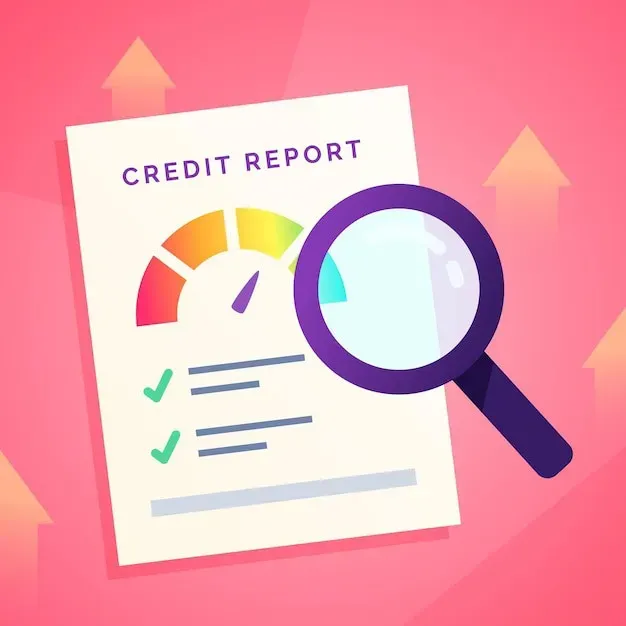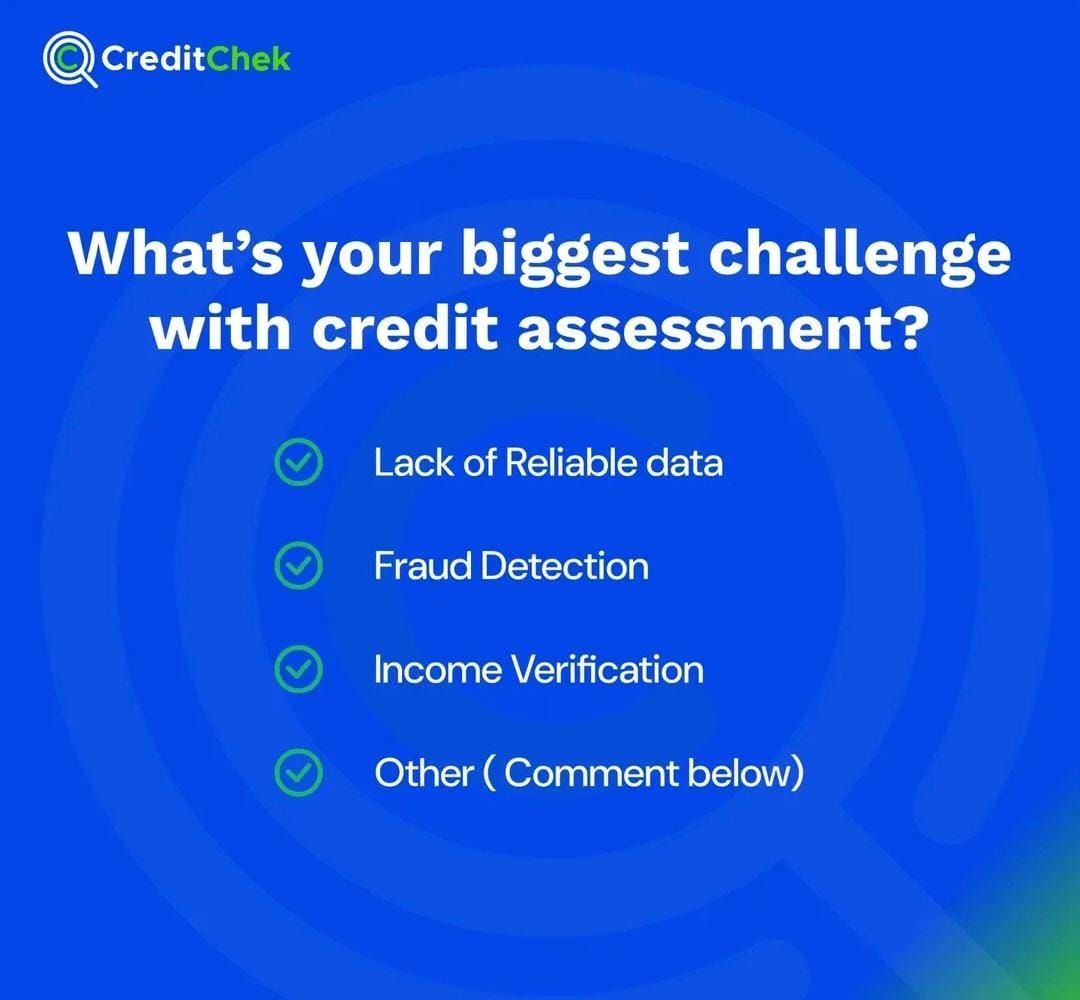CreditChek Blog
CreditChek is a cost effective, scalable credit assessment platform for B2B clients. Whether you’re a small lender or large enterprise, our solutions fit seamlessly into your operations.
Recent Posts
Jane Ezetah
Oct 15, 2025
2 Min. Read
CreditChek and Bbox partner to boost Solar access for 17 million Nigerians
At CreditChek, our mission has always been clear, to make financial inclusion borderless, accessible, and data-driven.
Today, we’re taking another step toward that vision.
We are proud to announce our partnership with Bboxx Nigeria, a leading provider of solar energy solutions, to expand access to clean energy for over 17.5 million Nigerians under the World Bank–backed DARES renewable energy initiative.
.jpg)
This collaboration combines Bboxx’s expertise in solar distribution and financing with CreditChek’s AI-powered credit assessment infrastructure, enabling more equitable access to solar financing.
Together, we are streamlining underwriting, improving repayment predictability, and empowering off-grid households with affordable, sustainable energy.
WHY IT MATTERS
Millions of Nigerians still live off-grid or face irregular power supply, limiting their ability to work, learn, and build wealth. Access to solar energy changes that, but financing often remains a barrier.
By connecting data-driven credit assessment to solar distribution, we are breaking that barrier and creating new pathways to energy, opportunity, and inclusion.

For us, this partnership reinforces a simple truth — access to energy and access to finance are deeply connected.
When we build smarter credit systems, we unlock more than power; we unlock possibilities for millions.
Together, we’re lighting up homes, powering opportunities, and shaping a brighter financial future.
CreditChek — your credit, without borders.
For partnership or product inquiries, visit www.creditchek.africa
Tailored Articles
Looking for something specific? Select from the filters below!
category
tag
Jane Ezetah
Oct 15, 2025
2 Min. Read
CreditChek and Bbox partner to boost Solar access for 17 million Nigerians
At CreditChek, our mission has always been clear, to make financial inclusion borderless, accessible, and data-driven.
Today, we’re taking another step toward that vision.
We are proud to announce our partnership with Bboxx Nigeria, a leading provider of solar energy solutions, to expand access to clean energy for over 17.5 million Nigerians under the World Bank–backed DARES renewable energy initiative.
.jpg)
This collaboration combines Bboxx’s expertise in solar distribution and financing with CreditChek’s AI-powered credit assessment infrastructure, enabling more equitable access to solar financing.
Together, we are streamlining underwriting, improving repayment predictability, and empowering off-grid households with affordable, sustainable energy.
WHY IT MATTERS
Millions of Nigerians still live off-grid or face irregular power supply, limiting their ability to work, learn, and build wealth. Access to solar energy changes that, but financing often remains a barrier.
By connecting data-driven credit assessment to solar distribution, we are breaking that barrier and creating new pathways to energy, opportunity, and inclusion.

For us, this partnership reinforces a simple truth — access to energy and access to finance are deeply connected.
When we build smarter credit systems, we unlock more than power; we unlock possibilities for millions.
Together, we’re lighting up homes, powering opportunities, and shaping a brighter financial future.
CreditChek — your credit, without borders.
For partnership or product inquiries, visit www.creditchek.africa
Jane Ezetah
Jan 28, 2025
5 Min. Read
CreditChek partners with CredPal to expand credit access across Africa
CreditChek partners with CredPal to enhance creditworthiness verification for its new credit card business, while also expanding its vision for cross-border credit assessment across Africa and beyond.

Photo: Kingsley Ibe (CEO CreditChek) & Olumide Badewole (CredPal’s Head of risk management)
CreditChek, a leading credit assessment infrastructure provider in Africa, has partnered with CredPal to deliver creditworthiness and identity verification services for CredPal’s new credit card business. This collaboration represents a significant step for CreditChek as it strengthens its mission to make credit across Africa more accessible, transparent, and reliable.
At the core of CreditChek’s platform is its ability to simplify and enhance credit assessments. From verifying income to analysing credit histories and detecting potential fraud, CreditChek provides financial institutions with the insights they need to make informed decisions. This not only benefits businesses but also directly impacts consumers by reducing the time and effort required to access credit, paving the way for more people to participate in the formal financial system.
“We are excited to partner with CreditChek, a game-changer in credit scoring and reporting in Africa. What we love about Creditchek is how their innovative approach aligns perfectly with our mission to provide access to credit seamlessly across developing economies,” said Olumide Badewole, CredPal’s Head of Risk.
“Our collaboration is well poised toward fixing some of the industry’s long-standing challenges. Essentially, this partnership is about building a future where credit is fair and accessible to everyone,” he added.
Since its launch in 2022, CreditChek has facilitated over 300,000 verifications and supported over $30 million in loan approvals. Its innovative tools are trusted by over 80 financial institutions, including Moni, AjoCard, Trade Lenda, Gamp and Vetsark. Through this partnership, CreditChek is extending its impact, equipping CredPal with robust verification and risk assessment capabilities to drive the adoption of credit cards in Nigeria and beyond.
With its recently launched product, Spectrum, built in partnership with one of the Credit Bureaus, CreditChek is tackling the fraud risks inherent in money-lending services. Spectrum enables financial institutions to join a shared network where they can exchange data to protect themselves from chronic debtors. The product blacklists such debtors within the network and ensures their information is automatically updated with credit bureaus.
Addressing low credit card penetration in Africa
This partnership is crucial given the relatively low credit card penetration in Nigeria and across the African continent. In Nigeria, as of 2024, only about 1.6% of the population owned a credit card, placing the country 117th globally in terms of credit card penetration. Similarly, sub-Saharan Africa exhibits some of the world’s lowest credit card penetration rates, with credit card usage around 3%. This limited adoption is attributed to factors such as low-income levels (not meeting the thresholds required by traditional credit card issuers), lack of credit history, and a strong preference for cash transactions.
CreditChek’s role in improving credit access
CreditChek is positioning itself at the forefront of transforming credit access across the continent. By leveraging advanced technology, CreditChek streamlines income, identity, and credit history verification for businesses, enabling them to make more informed and fair lending decisions. This approach is particularly crucial in regions where traditional credit assessment methods are inadequate or non-existent.

L-R: Jane Ezetah (CreditChek’s marketing and content strategist), Henry Okike (CredPal’s finance manager), Kingsley Ibe (CEO CreditChek), Olumide Badewole (CredPal’s Head of risk management)
The partnership with Credpal marks a pivotal step in CreditChek’s mission to build a cross-border credit assessment infrastructure. This infrastructure aims to empower African immigrants and consumers to access financial services globally, addressing the challenges posed by fragmented credit histories across borders. By facilitating the transfer of credit information, CreditChek enables financial institutions worldwide to assess the creditworthiness of African consumers, thereby promoting financial inclusion and economic empowerment.
Expanding financial inclusion for Africans
CreditChek is charting a future where African consumers can access financial services seamlessly, no matter where they are in the world.
“Beyond this partnership, CreditChek is evolving into a cross-border credit assessment infrastructure,” says Kingsley Ibe, CEO of CreditChek. “For African immigrants and consumers globally, our goal is simple: wherever you go as an African, you should have access to essential financial services—whether it’s opening a bank account, obtaining credit cards, or securing affordable leases.”
This vision aligns with projections from Baobab Network, a recent investor in CreditChek, which estimates that 147 million Africans will emigrate by 2050.
CreditChek’s focus on cross-border credit assessment aims to bridge the gap for these individuals, ensuring their credit histories can move with them. This would allow African immigrants to access financial services in countries like the UK, Canada, and the US from the moment they arrive.
Through its innovative solutions and strategic partnerships, CreditChek is addressing the immediate needs of financial institutions like Credpal and laying the groundwork for a more inclusive financial ecosystem across Africa.
Jane Ezetah
Jan 27, 2025
4 Min. Read
6 Easy Ways To Determine The Creditworthiness Of Customers
Creditworthiness is a method for assessing a potential borrower’s loan payment history to decide whether they are an eligible customer who
should be offered a future loan.
.webp)
A lender’s willingness to trust users to pay their debts is determined by their creditworthiness.
A creditworthy borrower is one that a lender believes is willing, competent, and responsible enough to make loan repayments until the debt is repaid.
Make sure you use the right methods to verify the creditworthiness of potential borrowers before you offer loans to help protect your company against late or non-payments.
Here are a few methods for determining a potential customer’s creditworthiness
1. Run a Credit Report

Running a credit report is an effective method to assess a customer’s creditworthiness.
Credit reports provide current company information, payment history, management details, important financial data, and credit scores.
These credit reports will reveal whether a company can pay its debts.
2. Check Trade References

Trade references are important when dealing with suppliers and other companies.
These are sources that can show historical payment transactions between a company and a supplier.
Check the following with the potential customer’s trade references:
- The timeframe in which the parties have dealt
- Examine the potential customer’s account and payment history
- Consider it a red flag if you uncover a habit of late payments.
3. Use Big Data to Analyze Company’s Financial History
.webp)
Companies can gain useful information about their potential customers through big data.
Trade credit insurance is an ideal example of how businesses can quickly collect additional client information to improve credit services.
Creditchek assist firms in gaining deeper insights into the strengths and weaknesses of their potential consumers using the financial data we provide.
4. Conduct a detailed check of recently filed accounts

When a business wants to trade with you, make sure they give you all the financial information you need to determine their capacity to pay for your products and/or services.
It is important to assess the company’s financial performance by examining the financial statement and revealing its financial health.
Remember to go through the cash flow statement, which shows the company’s current operating performance.
5. Understand the Company and its environment

Check to see whether the business is related to or associated with any failing businesses (including overseas businesses).
Also, don’t forget to look into any parent or sibling organizations.
When determining a customer’s creditworthiness, it’s also important to consider external factors that may influence business activity, such as economic or political instability, regulations or bans, and local business practices.
All of these factors can negatively impact a potential customer’s cash flow, making extending trade credit a higher risk.
6. Use an Information Provider

Finding the proper data might be tough.
Access to corporate data such as financial statements is still challenging, especially in several countries.
Using the scores and ratings provided by information providers can help you save time and money by allowing you to easily assess the suitable amount of credit to offer, lower your risk of bad debt, and estimate delayed or late payments.
You can start analyzing your potential customer’s creditworthiness today. Sign up at https://creditchek.africa/ for free.
Subscribe For More Updates On loan repayments, Consumer credit, Credit Assessment and Verification Of Borrowers.
Subscribe to get Update On Every New Blog
Join over 4,000+ already connected with CreditChek.



.jpg)
.jpg)

.jpg)



.jpg)

-300x400.jpg)





